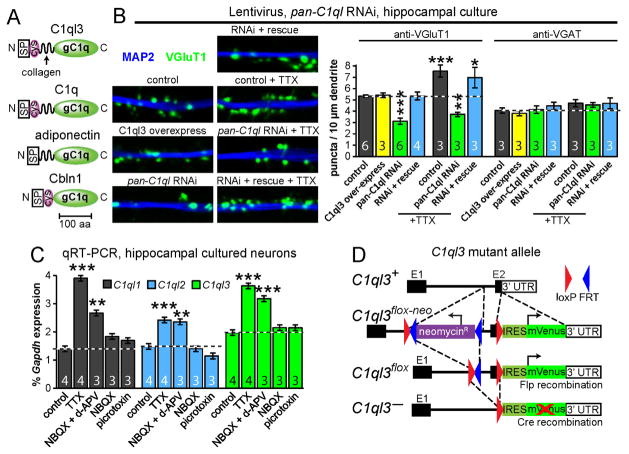Fig. 1. RNAi-mediated knockdown of C1ql’s reduces synapse density in cultured neurons and neuronal activity regulates C1ql expression.
(A) Domain structures of gC1q-domain proteins (C1ql3, C1q, adiponectin, and Cbln1; abbreviations: SP, signal peptide; cys, conserved cysteines; gC1q, globular C1q domain).
(B) C1ql knockdown decreases excitatory synapse density (left, representative images of cultured hippocampal neurons immunostained for VGluT1 and MAP2; right, summary graphs of the density of synaptic puncta). Neurons were infected at DIV5 with control or C1ql knockdown lentivirus with or without simultaneous co-expression of C1ql3, and examined at DIV14. Neurons were analyzed with and without a 3-day TTX treatment (from DIV11-DIV14) as indicated.
(C) Activity blockade increased C1ql1–3 expression. Cultured neurons were treated with TTX (1 μM), NBQX (10 μM), d-APV (50 μM), or picrotoxin (50 μM) from DIV14-DIV17, after which total mRNA was harvested and analyzed by qRT-PCR.
(D) Targeting scheme for conditional C1ql3-mVenus mutant allele.
Data in B and C are means ± SEM. Numbers in bar diagrams indicate number of independent experiments. Statistical comparisons were performed using 1-way ANOVA with Bonferroni’s post-hoc test (* p ≤ 0.05, ** p ≤ 0.01, *** p ≤ 0.001). See also Fig. S1.

